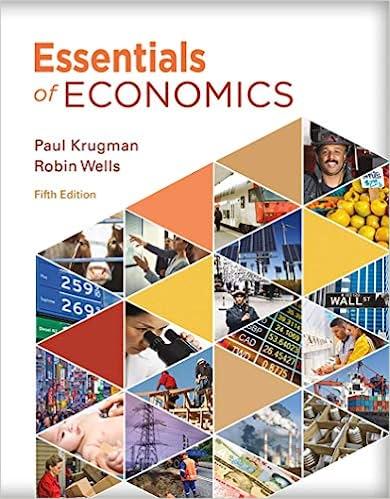The airline industry made $36 billion in profits in 2015, up from nearly $12 billion in 2013.
Question:
The airline industry made $36 billion in profits in 2015, up from nearly $12 billion in 2013.
But in 2008, during the recession, the industry was teetering on the edge of disaster.
According to the International Air Transport Association, the industry lost $11 billion that year.
However, by 2009, despite the fact that the economy was still extremely weak and airline traffic was still well below normal, profitability began to rebound. And by 2010, despite continued economic weakness, the airline industry had definitely recovered, achieving an
$8.9 billion profit that year.
How did the airline industry achieve such a dramatic turnaround? Simple: fly less and charge more. In 2011, fares were 8% higher than they had been the previous year and 17%
higher compared to 2009. Flights were more crowded than they had been in decades, with fewer than one in five seats empty on domestic flights. And that trend continues today.
In addition to cutting back on the number of flights—particularly money-losing ones—
airlines began to vary ticket prices based on time of departure and when the ticket was purchased. For example, the cheapest days to fly are Tuesday or Wednesday, with Friday and Saturday the most expensive days to travel. The first flight of the morning (the one that requires you to get up at 4 A.M.) is cheaper than later flights. And the cheapest time to buy a ticket is Tuesday at 3 P.M. Eastern Standard Time, with tickets purchased over the weekend carrying the highest prices.
It doesn’t stop there. As every beleaguered traveler knows, airlines have tacked on a wide variety of new fees and increased old ones—fees for food, blankets, baggage, even the right to board first or choose your seat in advance. Airlines have also become more inventive at imposing fees that are hard for travelers to track in advance—such as imposing a holiday surcharge while claiming that fares have not increased for the holiday.
In 2007, airlines earned $2.45 billion from fees, a relatively small amount. But by 2016 that number had exploded to nearly $70 billion, an increase of almost 2,500% from 2007. The increase in revenue continued despite fuel being at its lowest level in six years. Yet many airlines continued to charge passengers a fuel surcharge, which federal airline regulators allowed airlines to impose in times of very high fuel costs.
But industry analysts question whether airlines can maintain such high levels of profitability. In the past, as travel demand picked up, airlines increased capacity—added seats—too quickly, leading to falling airfares. “The wild card is always capacity discipline,”
says an airline industry researcher. “All it takes is one carrier to begin to add capacity aggressively, and then we follow and we undo all the good work that’s been done.”
Questions:-
1. How would you describe the price elasticity of demand for airline flights given the information in this case? Explain.
2. Using the concept of elasticity, explain why airlines would create such great variations in the price of a ticket depending on when it is purchased and the day and time the flight departs. Assume that some people are willing to spend time shopping for deals as well as fly at inconvenient times, but others are not.
3. Using the concept of elasticity, explain why airlines have imposed fees on things such as checked bags. Why might they try to hide or disguise fees?
4. Use an elasticity concept to explain under what conditions the airline industry will be able to maintain its high profitability in the future. Explain.
Step by Step Answer:






